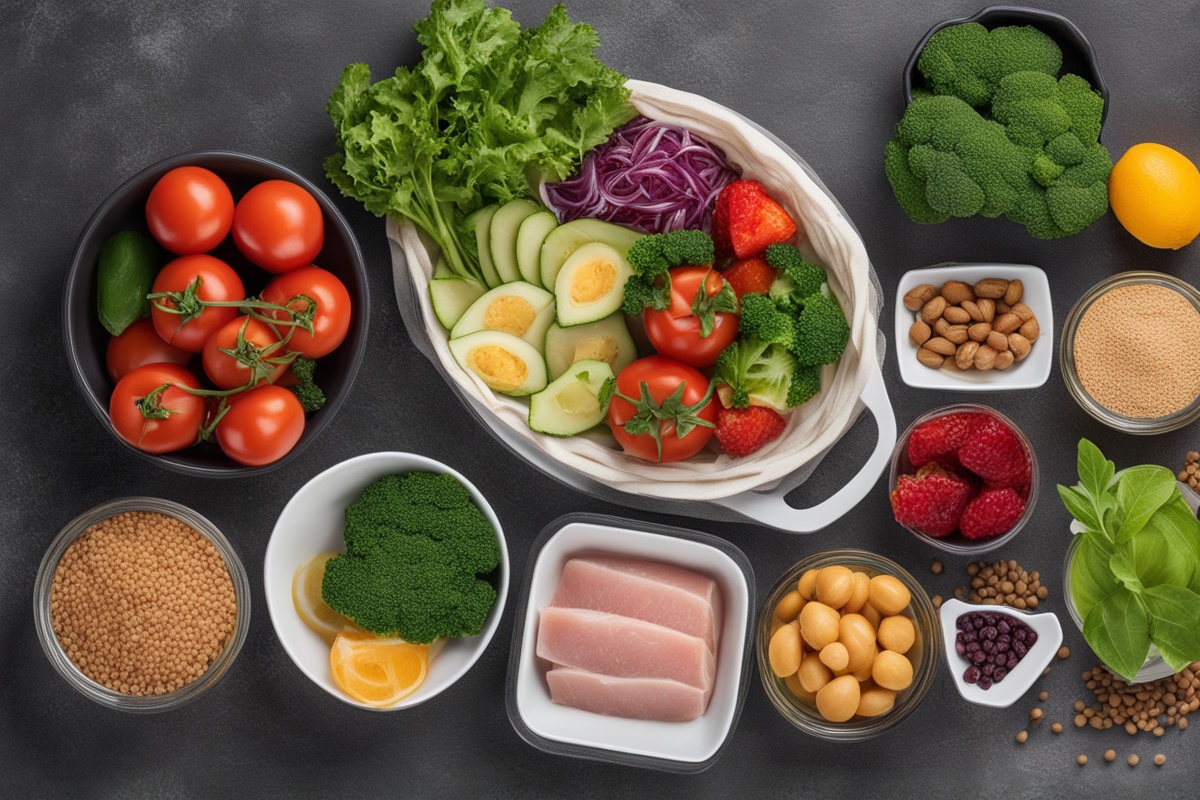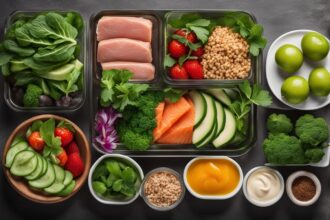Intermittent fasting (IF) has gained immense popularity as a flexible and sustainable approach to weight management, improved metabolism, and overall wellness. However, one of the biggest challenges for those practicing IF is figuring out what to eat during the eating windows to maximize health benefits. This is where healthy recipes during intermittent breaks come into play. Crafting nutritious, balanced meals ensures that your body gets the fuel it needs without derailing your fasting goals. In this post, we’ll explore how to prepare healthy meals for your intermittent fasting breaks, offering practical tips, recipes, and insights to keep you energized and satisfied.
What Are Healthy Recipes During Intermittent Breaks?
Healthy recipes during intermittent breaks refer to meals and snacks specifically designed to be consumed during the eating windows of an intermittent fasting schedule. These recipes prioritize nutrient-dense ingredients, balanced macronutrients (proteins, fats, and carbohydrates), and portion control to support your fasting goals. Whether you follow a 16:8, 5:2, or alternate-day fasting plan, the meals you eat during your breaks should replenish your energy, stabilize blood sugar, and prevent overeating.
The goal is to focus on whole foods like lean proteins, healthy fats, and complex carbohydrates while avoiding processed sugars and empty calories. By doing so, you can enhance the benefits of fasting, such as improved insulin sensitivity and reduced inflammation. If you’re new to IF, check out our guide on Intermittent Fasting Basics for a deeper understanding of how eating windows work.
Why Focus on Healthy Recipes for Intermittent Fasting?
While intermittent fasting allows flexibility in food choices, what you eat during your breaks significantly impacts your results. Consuming high-calorie, low-nutrient foods can counteract the benefits of fasting, leading to energy crashes, cravings, and weight gain. Healthy recipes during intermittent breaks help you:
- Maintain stable energy levels throughout the day.
- Support muscle repair and growth with adequate protein.
- Reduce the risk of overeating by prioritizing filling, nutrient-rich foods.
- Enhance digestion with fiber-rich ingredients.
By planning your meals with intention, you can align your diet with your fasting schedule for optimal health. For more tips on balancing nutrition during IF, explore our post on Balancing Macros During Fasting.
Key Principles for Crafting Healthy Recipes During Intermittent Breaks
Creating meals for intermittent fasting doesn’t have to be complicated. Here are some core principles to follow when preparing healthy recipes during intermittent breaks:
- Prioritize Protein: Protein-rich foods like chicken, fish, eggs, and legumes help with satiety and muscle maintenance, especially after a fasting period.
- Incorporate Healthy Fats: Avocados, nuts, seeds, and olive oil provide sustained energy and support brain health.
- Choose Complex Carbs: Opt for whole grains, sweet potatoes, and vegetables over refined carbs to avoid blood sugar spikes.
- Hydrate First: Break your fast with water or a hydrating beverage before eating to prevent overeating.
- Control Portions: Use smaller plates or pre-portion meals to avoid consuming too many calories in one sitting.
These principles form the foundation of any successful IF meal plan. If you’re looking for tools to track your macros and portions, read our article on Best Apps for Fasting Tracking.
5 Healthy Recipes During Intermittent Breaks to Try
Here are five simple, nutritious recipes tailored for your eating windows. Each recipe is designed to be quick to prepare, nutrient-dense, and aligned with intermittent fasting goals.
1. Avocado & Egg Breakfast Bowl
Ingredients (Serves 1): 2 eggs, ½ avocado, 1 cup spinach, 1 tbsp olive oil, salt, and pepper.
Instructions: Sauté spinach in olive oil, fry or poach eggs to your liking, and top with sliced avocado. Season with salt and pepper. This protein-packed meal is perfect for breaking a fast with healthy fats and greens.
Calories: ~350
2. Quinoa & Veggie Power Salad
Ingredients (Serves 2): 1 cup cooked quinoa, 1 cup mixed greens, ½ cup cherry tomatoes, ½ cucumber, ¼ cup feta cheese, 2 tbsp olive oil, lemon juice.
Instructions: Toss all ingredients together with olive oil and lemon juice for a refreshing, fiber-rich meal.
Calories: ~400 per serving
3. Grilled Chicken & Sweet Potato Plate
Ingredients (Serves 1): 6 oz grilled chicken breast, 1 small sweet potato (cubed and roasted), 1 cup steamed broccoli, 1 tbsp olive oil.
Instructions: Grill chicken, roast sweet potato with olive oil, and steam broccoli for a balanced post-fast meal.
Calories: ~450
4. Greek Yogurt & Berry Parfait
Ingredients (Serves 1): ¾ cup Greek yogurt (unsweetened), ½ cup mixed berries, 1 tbsp chia seeds, 1 tsp honey.
Instructions: Layer ingredients in a bowl or glass for a quick, protein-rich snack or light meal.
Calories: ~250
5. Salmon & Asparagus Skillet
Ingredients (Serves 1): 5 oz salmon fillet, 1 cup asparagus, 1 tbsp olive oil, garlic, lemon zest.
Instructions: Pan-sear salmon with garlic and olive oil, adding asparagus for the last 3–4 minutes. Finish with lemon zest.
Calories: ~400
Meal Prep Tips for Intermittent Fasting Success
Meal prepping is a game-changer when it comes to sticking to healthy recipes during intermittent breaks. Here are some actionable tips to streamline your meal prep:
- Batch Cook Proteins: Cook large portions of chicken, fish, or tofu at the start of the week to save time.
- Pre-Chop Veggies: Store chopped vegetables in airtight containers for quick assembly of salads or stir-fries.
- Portion Meals: Use divided containers to pre-portion meals and avoid overeating during eating windows.
- Freeze Extras: Prepare extra servings of recipes like quinoa or grilled chicken and freeze them for busy days.
Meal prepping ensures you always have healthy options on hand, reducing the temptation to grab unhealthy fast food. For more meal prep inspiration, check out our guide on Meal Prep for Fasting.
Common Mistakes to Avoid When Preparing Meals for IF Breaks
Even with the best intentions, it’s easy to make mistakes when planning healthy recipes during intermittent breaks. Here are some pitfalls to avoid:
- Breaking Fasts with Heavy Meals: Starting with a large, calorie-dense meal can overwhelm your digestive system. Begin with light foods like yogurt or broth.
- Skipping Hydration: Dehydration can mimic hunger, leading to overeating. Drink water before and after meals.
- Ignoring Nutrient Balance: Focusing solely on low-calorie foods without protein or fats can leave you feeling unsatisfied and fatigued.
- Eating Too Quickly: Take time to chew and savor your food to aid digestion and prevent overeating.
Avoiding these mistakes can help you stay on track with your fasting goals. For additional advice on common IF pitfalls, see our post on Common Intermittent Fasting Mistakes.
Disclaimer: The information provided in this post is for educational and informational purposes only and is not intended as medical advice. Intermittent fasting and dietary changes may not be suitable for everyone, especially those with underlying health conditions, pregnant or breastfeeding individuals, or those on specific medications. Always consult with a healthcare professional or registered dietitian before starting any fasting regimen or making significant changes to your diet.
References
- Harvard Health: Intermittent Fasting: Surprising Update
- Mayo Clinic: Intermittent Fasting FAQ
- NCBI: Effects of Intermittent Fasting on Health, Aging, and Disease
- WebMD: Intermittent Fasting Overview
- Academy of Nutrition and Dietetics: Intermittent Fasting
This content is for informational purposes only and not a substitute for professional advice.






